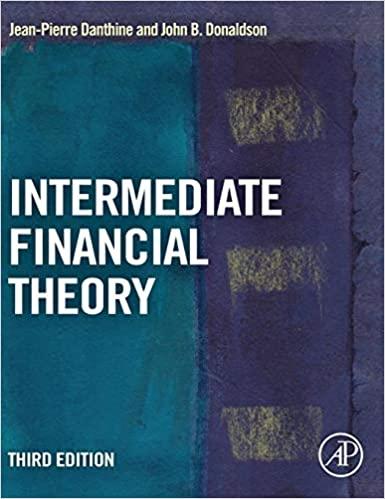Question
For the following, calculate the NPV. Investment amount: (1,000,000). Cash flows: Yr1: 251,000; Yr2: 289,000; Yr3: 582,000; Yr4: 456,000. Cost of capital: 16%. For the
For the following, calculate the NPV.
Investment amount: (1,000,000). Cash flows: Yr1: 251,000; Yr2: 289,000; Yr3: 582,000; Yr4: 456,000. Cost of capital: 16%.
For the following, calculate the NPV.
Investment amount: ($100,000). Cash flows: Yr1: 25,000; Yr2: 38,000; Yr3: 44,000; Yr4: 28,000. Cost of capital: 15%
Calculate the NPV.
Investment amount: (8,250,000). Cash flows: Yr1: 2,500,000; Yr2: 3,500,000; Yr3: 4,500,000; Yr4: 5,500,000. Cost of capital: 24%
Calculate they payback period for the following investment:
Initial investment: $10,000. Cash flows: Yr1: 2,000; Yr2: 3,000; Yr3: 3,000; Yr4: 2,000; Yr5: 5,000.
Calculate the payback period for the following investment: Total investment up front: ($5,000). Cash flows: Yr1: 4,000; Yr2: 500; Yr3: 1,000.
Calculate the payback period for this investment: Initial investment: ($10,000). Cash flows: Yr1: 4,000; Yr2: 2,000; Yr3: 1,000; Yr4: 6,000; Yr5: 4,000.
Calculate the IRR of the following.
Investment amount: (20,000,000). Cash flows: Yr1: 6,000,000; Yr2: 12,500,000; Yr3: (3,000,000); Yr4: 12,000,000. (Note: the machine being invested in requires maintenance resulting in a negative cash flow in year 3.)
Calculate the IRR of the following.
Investment amount: (12,500). Cash flows: Yr1: 2,500; Yr2: 3,500; Yr3: 4,500; Yr4: 6,500.
Step by Step Solution
There are 3 Steps involved in it
Step: 1

Get Instant Access to Expert-Tailored Solutions
See step-by-step solutions with expert insights and AI powered tools for academic success
Step: 2

Step: 3

Ace Your Homework with AI
Get the answers you need in no time with our AI-driven, step-by-step assistance
Get Started


